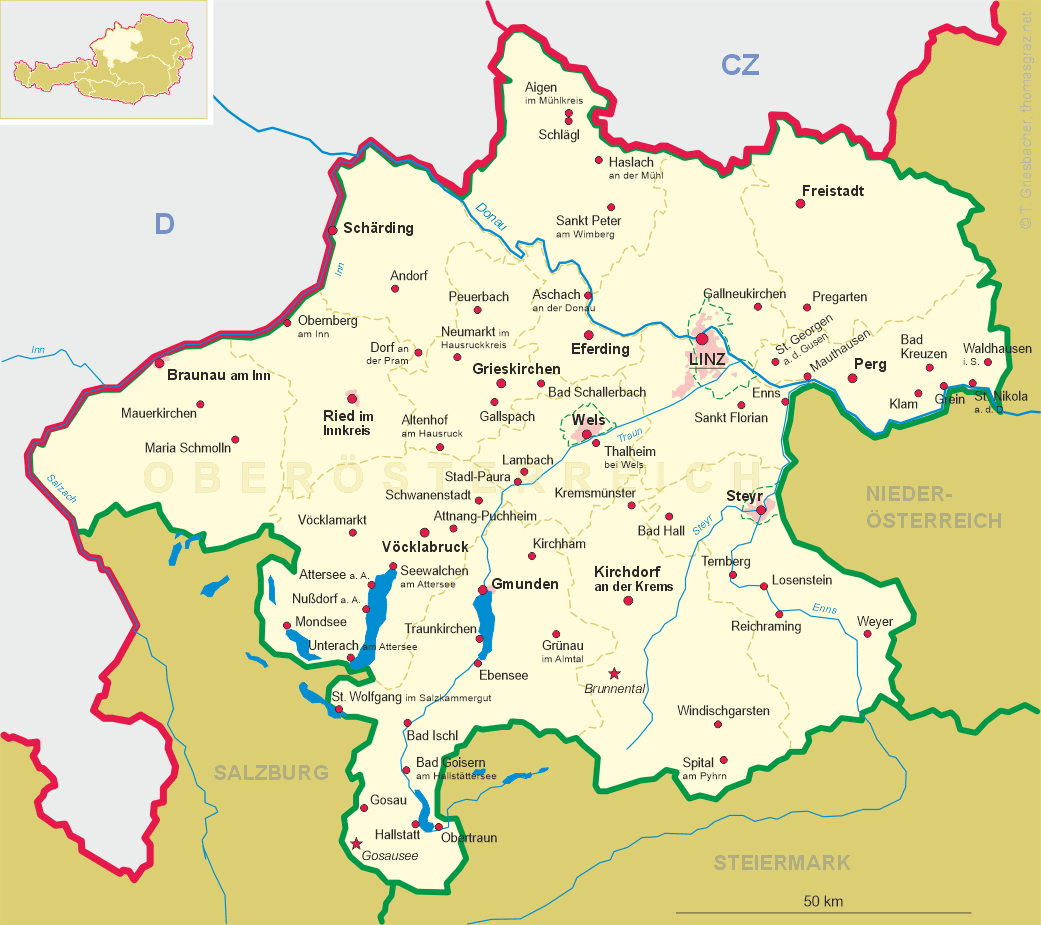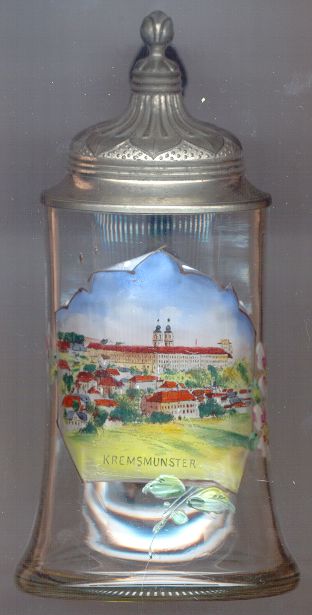| ÖSTERREICH
| AUSTRIA
|
| Bundesland: Oberösterreich
| Upper Austria
|
| Bezirk: Kirchdorf an der Krems
|
|
map →

Kremsmünster
• lt: Kremsmiunsteris
• ru: Кремсмюнстер
 Kremsmünster is situated at an elevation of 384 m at the Upper Austrian Krems river.
Its history goes back to AD 777, when the famous
Kremsmünster is situated at an elevation of 384 m at the Upper Austrian Krems river.
Its history goes back to AD 777, when the famous  Benedictine monastery [left]
was founded by Duke Tassilo III of Bavaria. According to the legend, he founded the monastery on the site where his son Gunther was killed by a wild boar.
The monastery church (Zum Heiligen Erlöser und zum Heiligen Agapitos; Christ the Saviour and St. Agapitus) was built between 1232 and 1350 in late Romanesque and early Gothic style.
The cenotaph of Gunther, which originally had been placed in front of the high altar, dates from prior to 1304.
After 1613 the church was remodelled in Baroque style. Especially between 1680 and 1720, the interior of the church was redecorated
with splendid Baroque ornaments after designs by Carlo Antonio Carlone. The monastery complex also was rebuilt by C.A. Carlone between 1680 and 1729.
Its famous splendid library holds more than 100,000 volumes, 792 incunabla, 416 block prints, and numerous manuscripts.
The 'Mathematical Tower' [in the picture on the glass on the right end of the monastery complex] (50 m high)
was built in 1749–1758 as observatory. The building today houses the monastery's historic collections of natural history.
Benedictine monastery [left]
was founded by Duke Tassilo III of Bavaria. According to the legend, he founded the monastery on the site where his son Gunther was killed by a wild boar.
The monastery church (Zum Heiligen Erlöser und zum Heiligen Agapitos; Christ the Saviour and St. Agapitus) was built between 1232 and 1350 in late Romanesque and early Gothic style.
The cenotaph of Gunther, which originally had been placed in front of the high altar, dates from prior to 1304.
After 1613 the church was remodelled in Baroque style. Especially between 1680 and 1720, the interior of the church was redecorated
with splendid Baroque ornaments after designs by Carlo Antonio Carlone. The monastery complex also was rebuilt by C.A. Carlone between 1680 and 1729.
Its famous splendid library holds more than 100,000 volumes, 792 incunabla, 416 block prints, and numerous manuscripts.
The 'Mathematical Tower' [in the picture on the glass on the right end of the monastery complex] (50 m high)
was built in 1749–1758 as observatory. The building today houses the monastery's historic collections of natural history.
The most famous item of the treasury of the monastery is the Tassilo Chalice, donated to the monastery by its founder, Tassilo III.
The copper and guilded silver goblet (25.5 cm high, weighing 3 kg and holding 1.75 litres)
was created some time between 768/769 and 788, possibly in Mondsee or Salzburg.
The two so-called Tassilo Candlesticks were originally thought to have been worked from the sceptre of Tassilo, but today are recognized as
works of the mid-10th century. The most valuable book is the Codex Millenarius, a gospel book written around 800 in the monastery of
Mondsee. All three pieces, the Tassilo Chalice, the candlesticks and the Codex Millenarius are still used regularly today,
though only for special occasions.
![[scale]](lineal.jpg)


 Kremsmünster is situated at an elevation of 384 m at the Upper Austrian Krems river.
Its history goes back to AD 777, when the famous
Kremsmünster is situated at an elevation of 384 m at the Upper Austrian Krems river.
Its history goes back to AD 777, when the famous  Benedictine monastery
Benedictine monastery![[scale]](lineal.jpg)